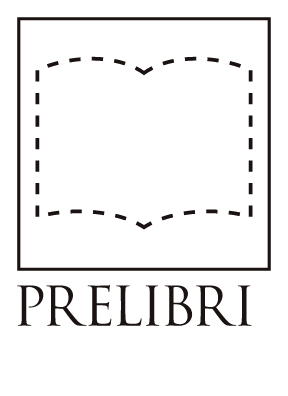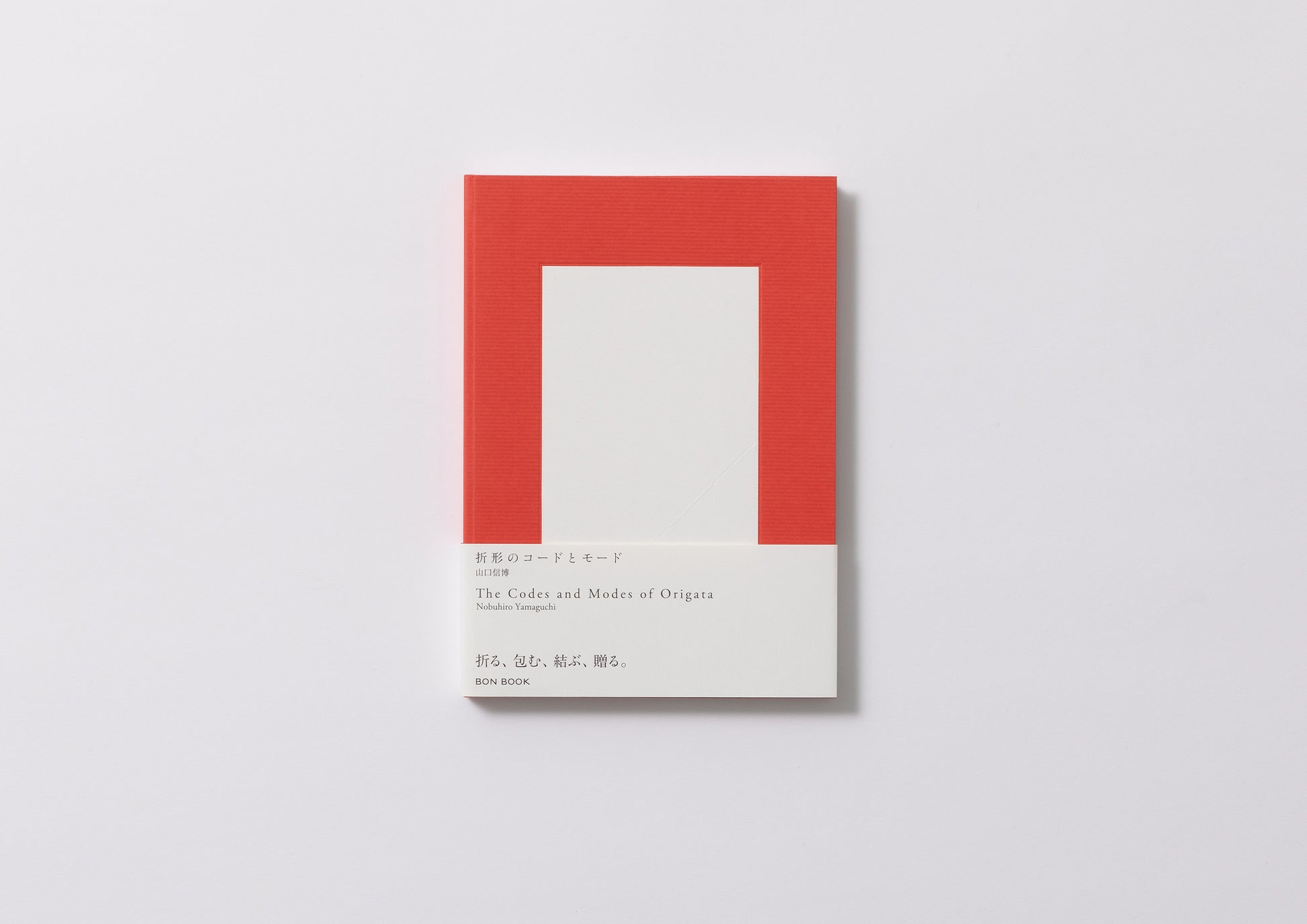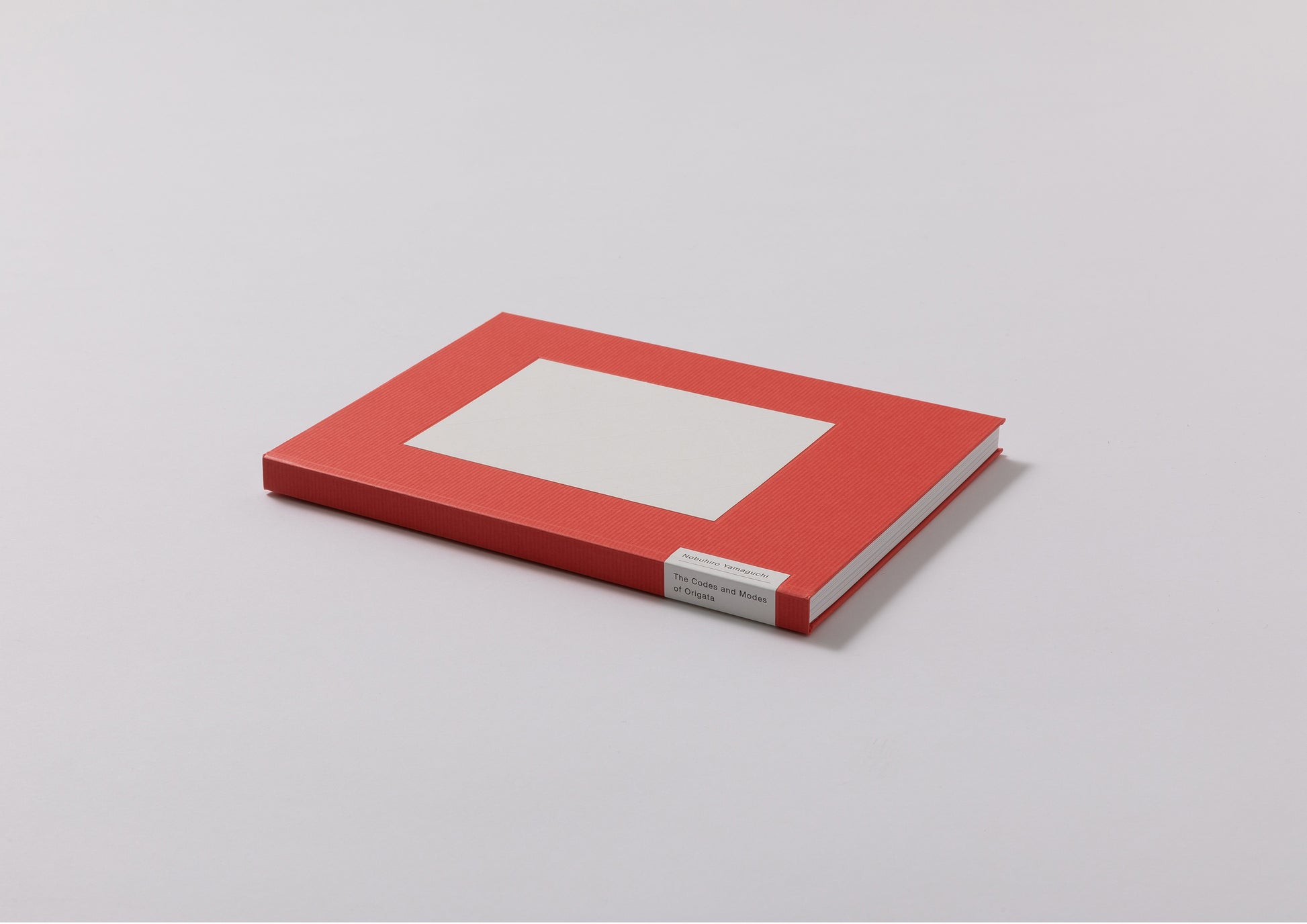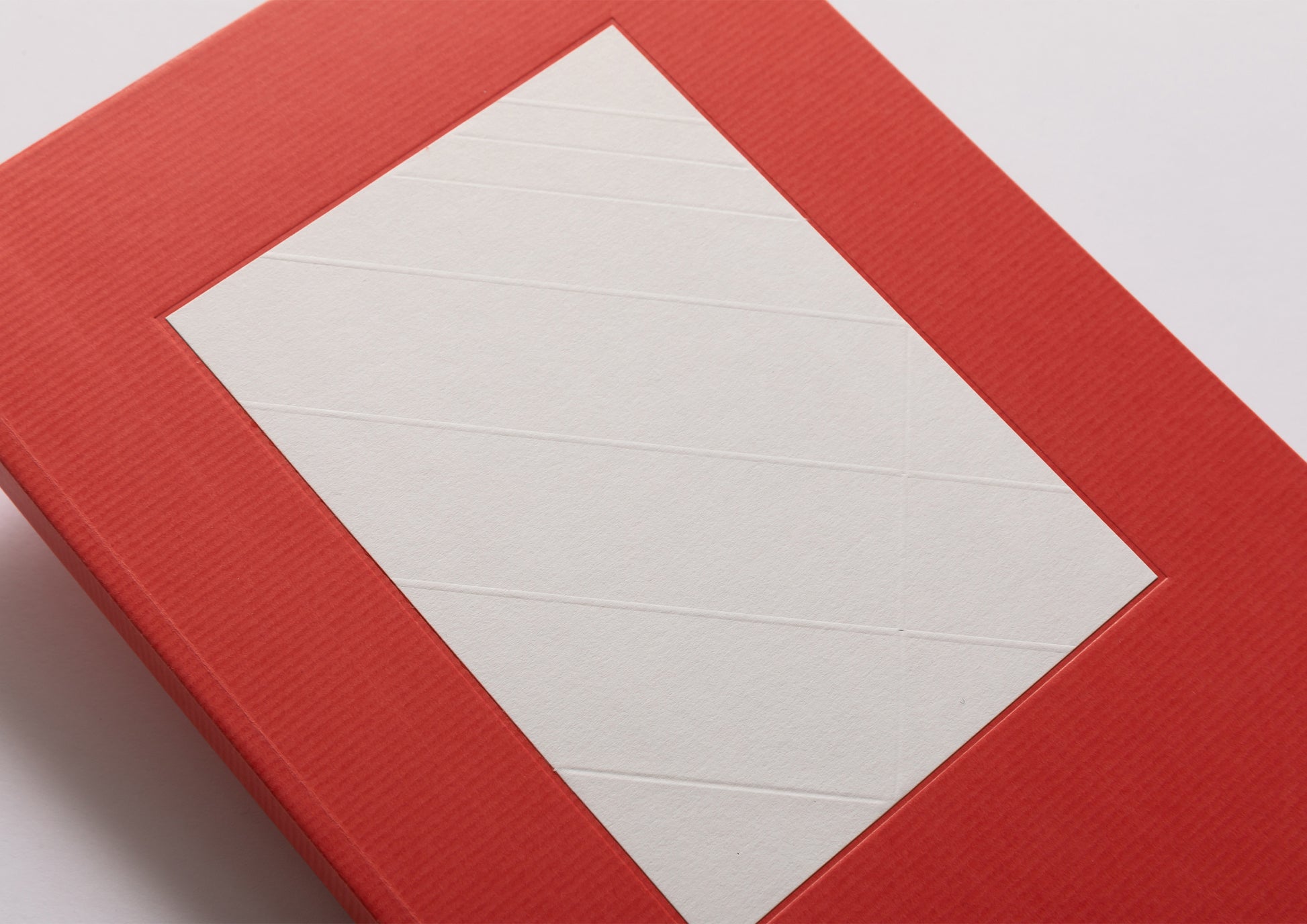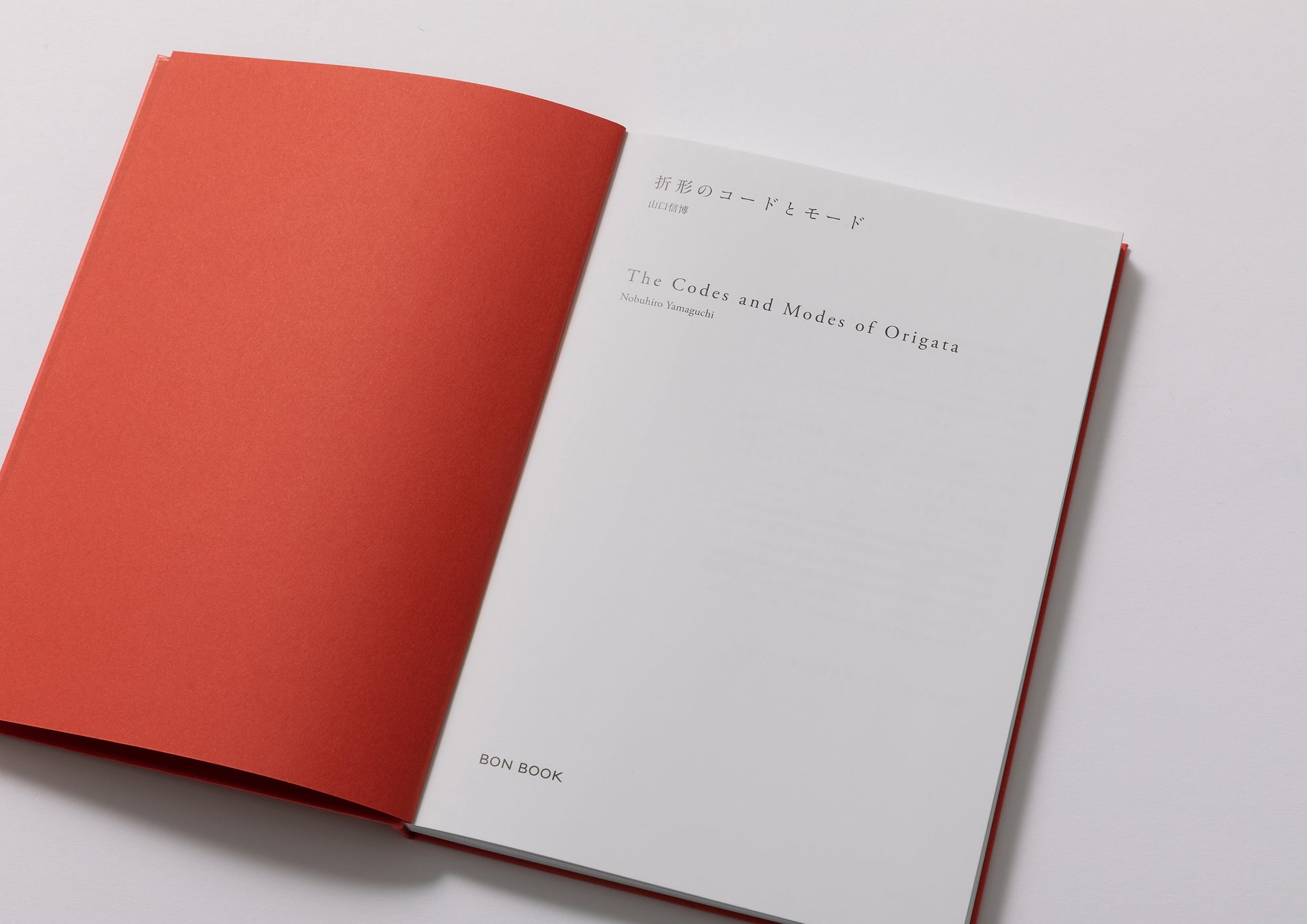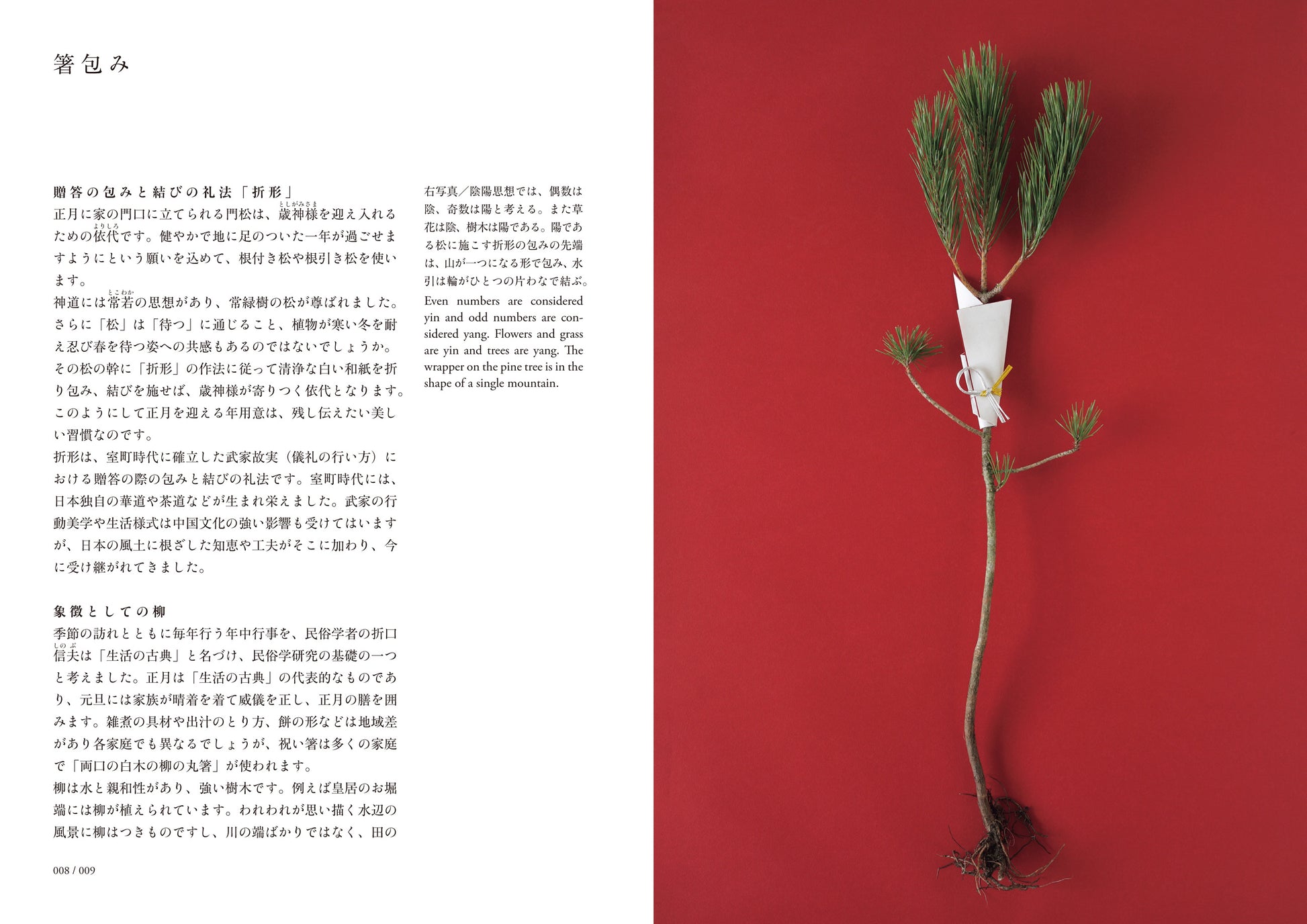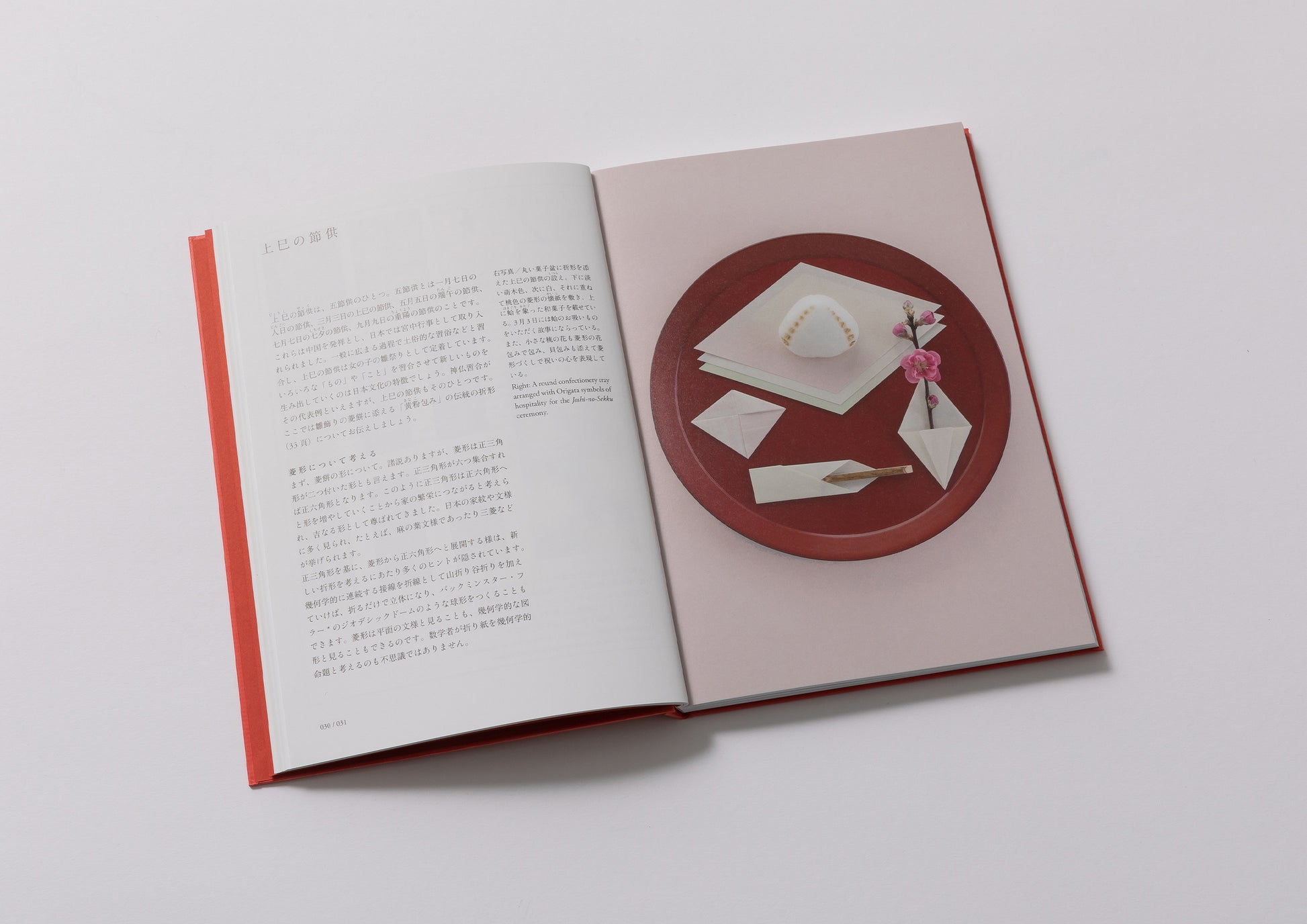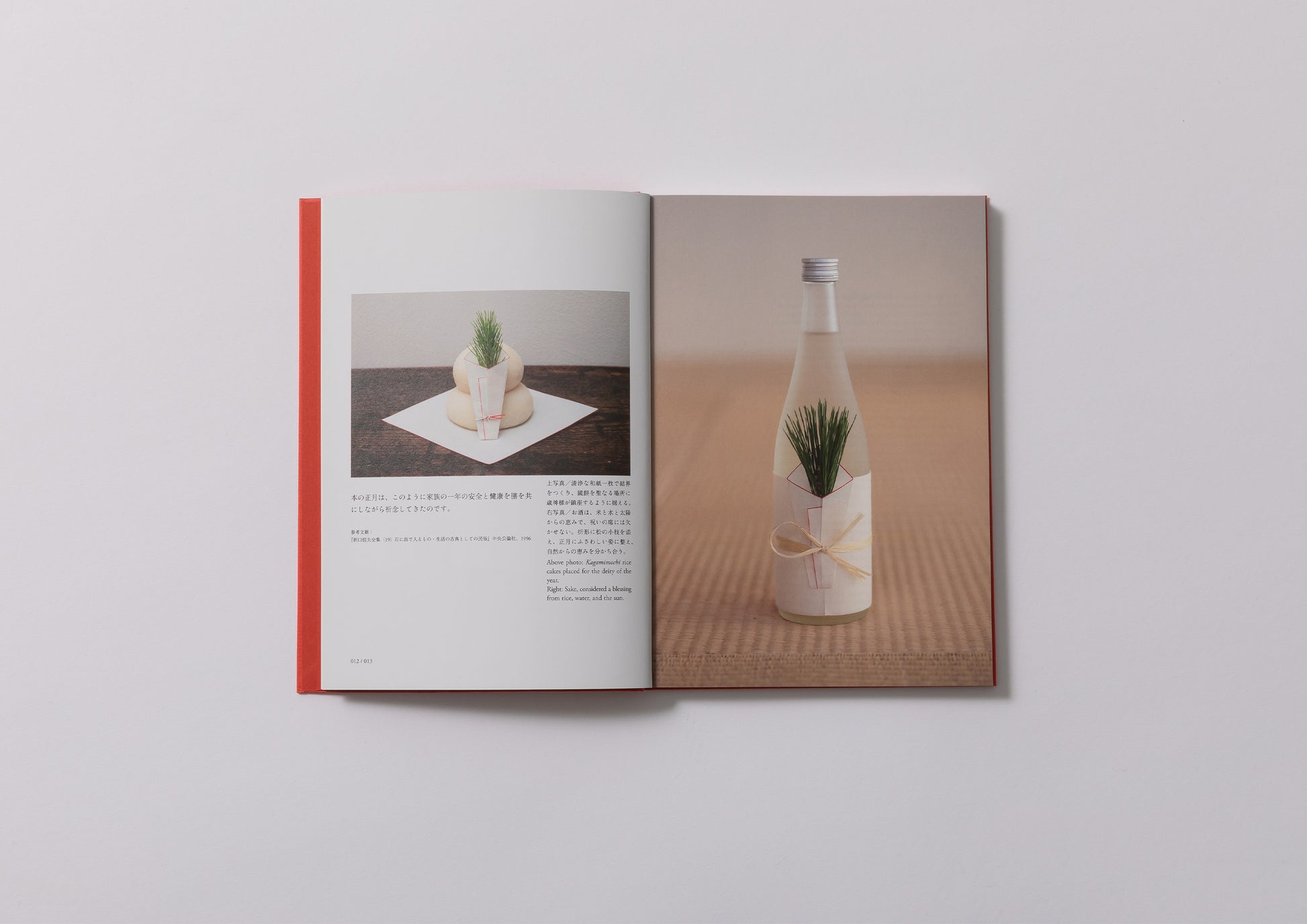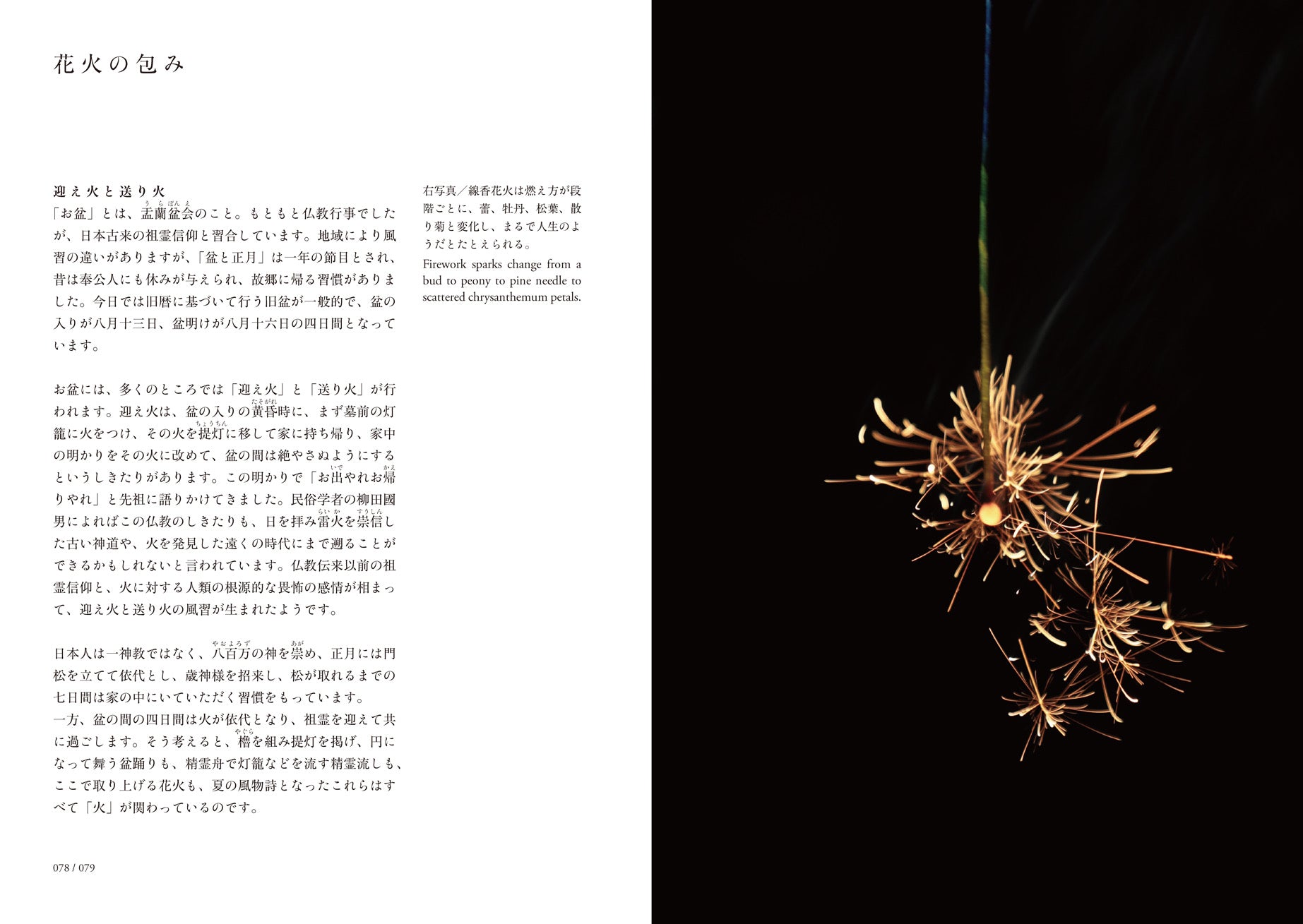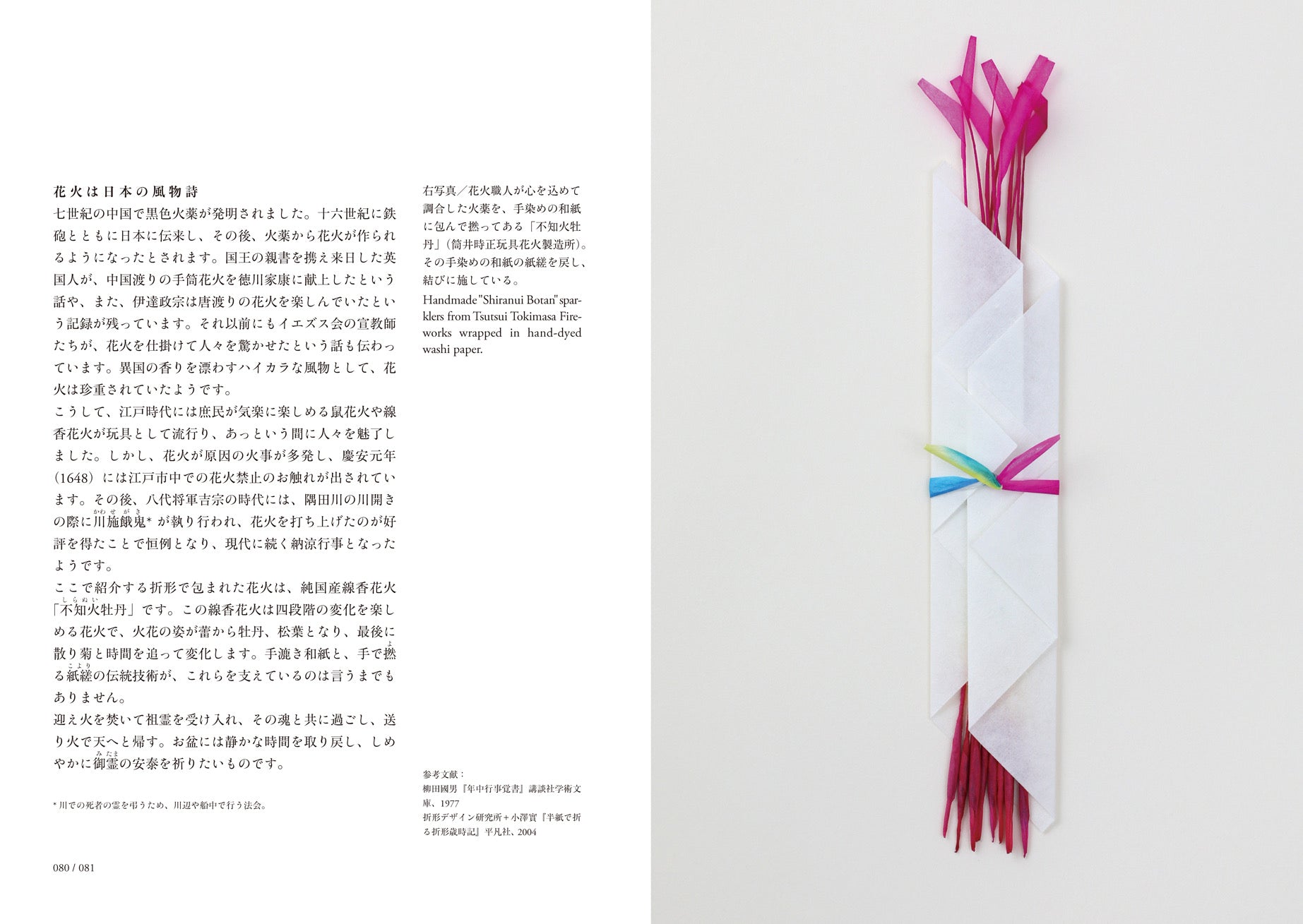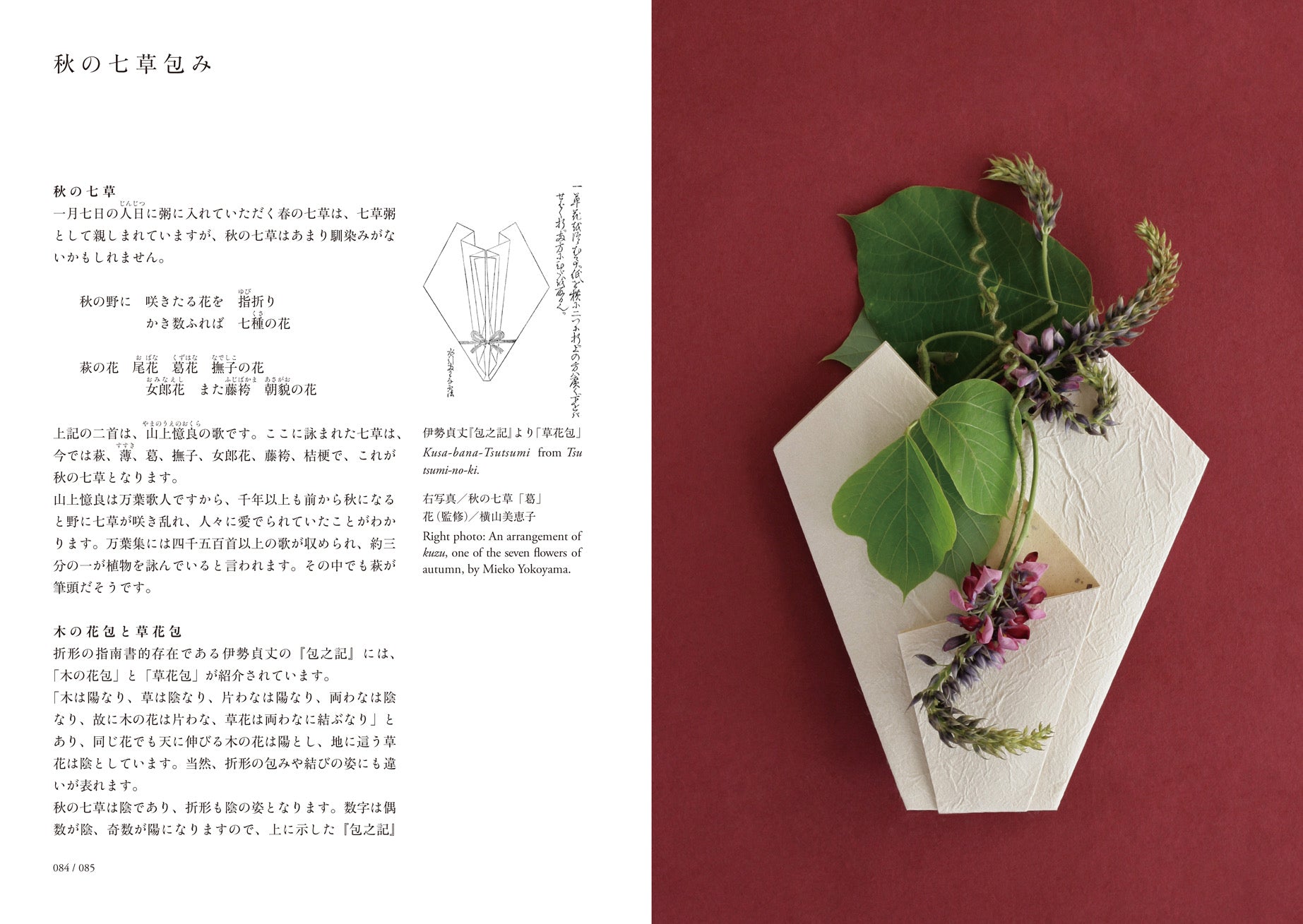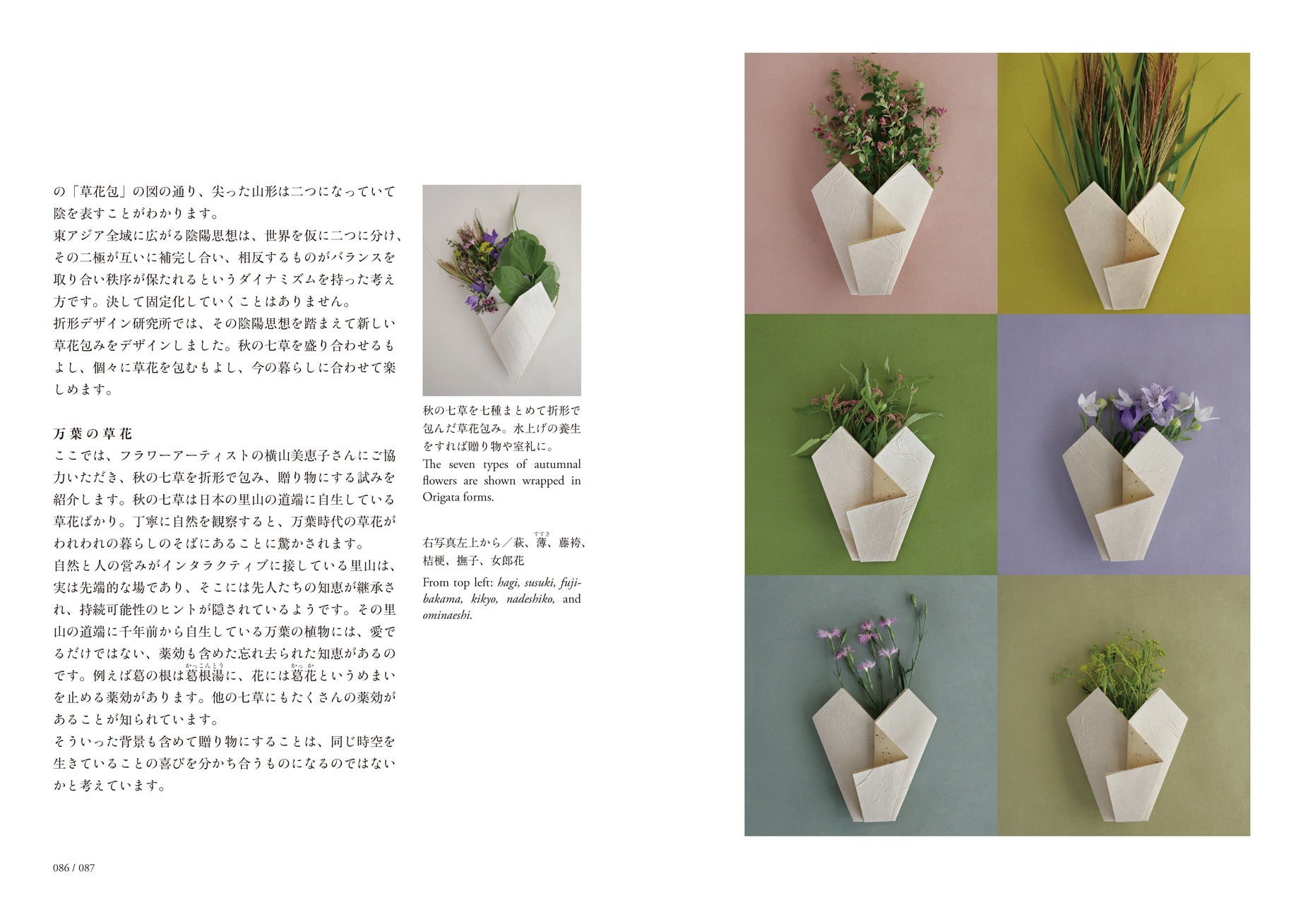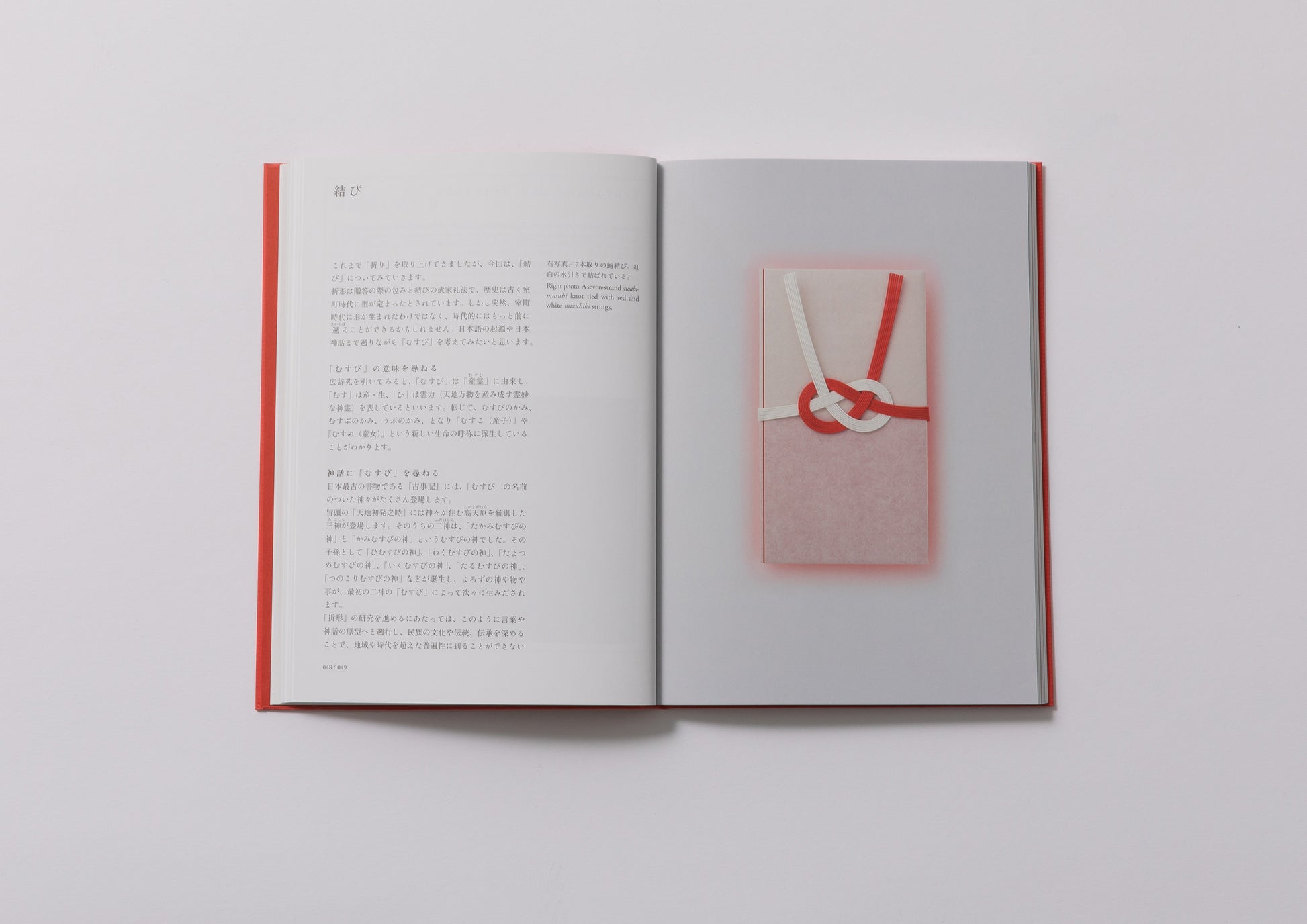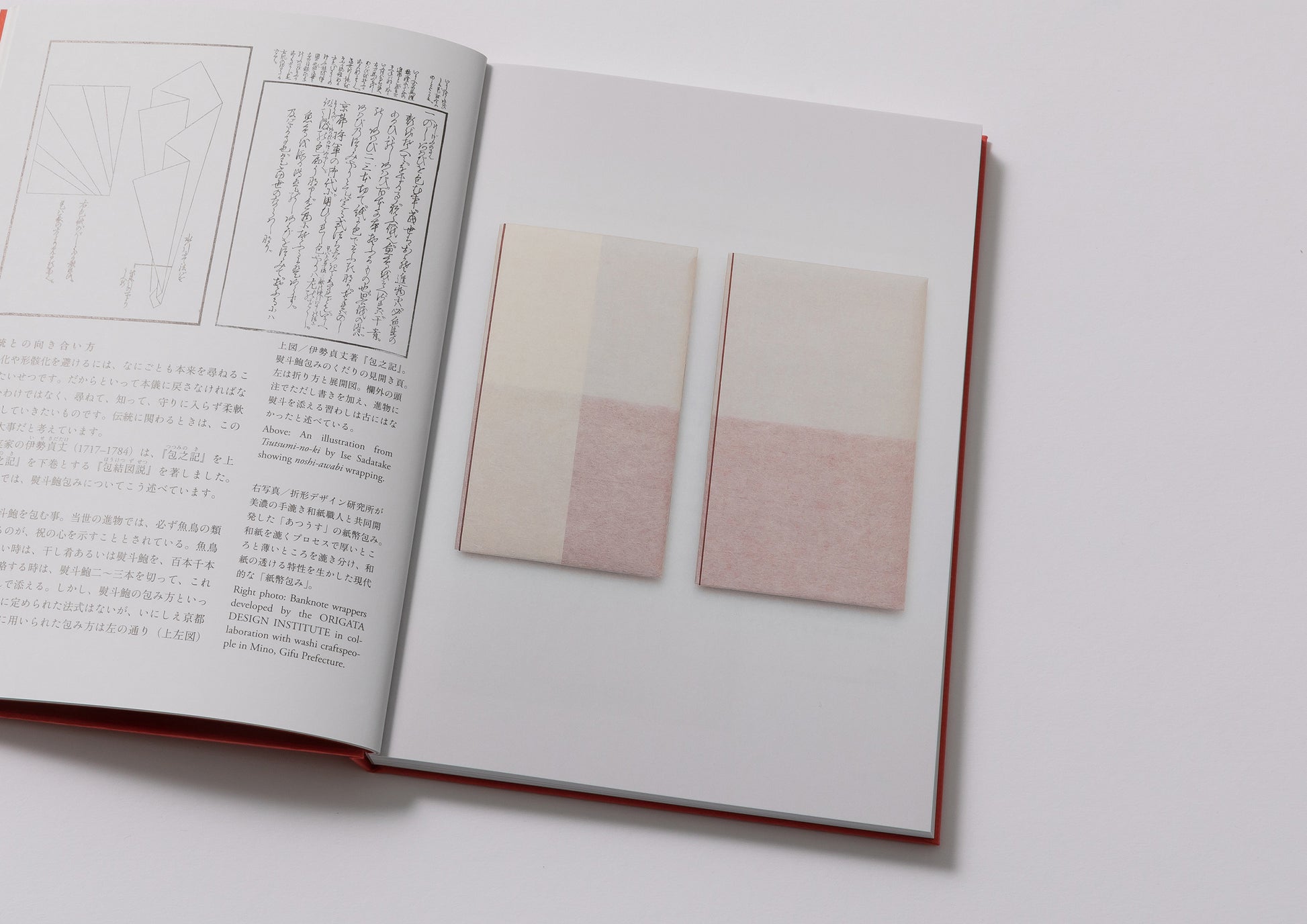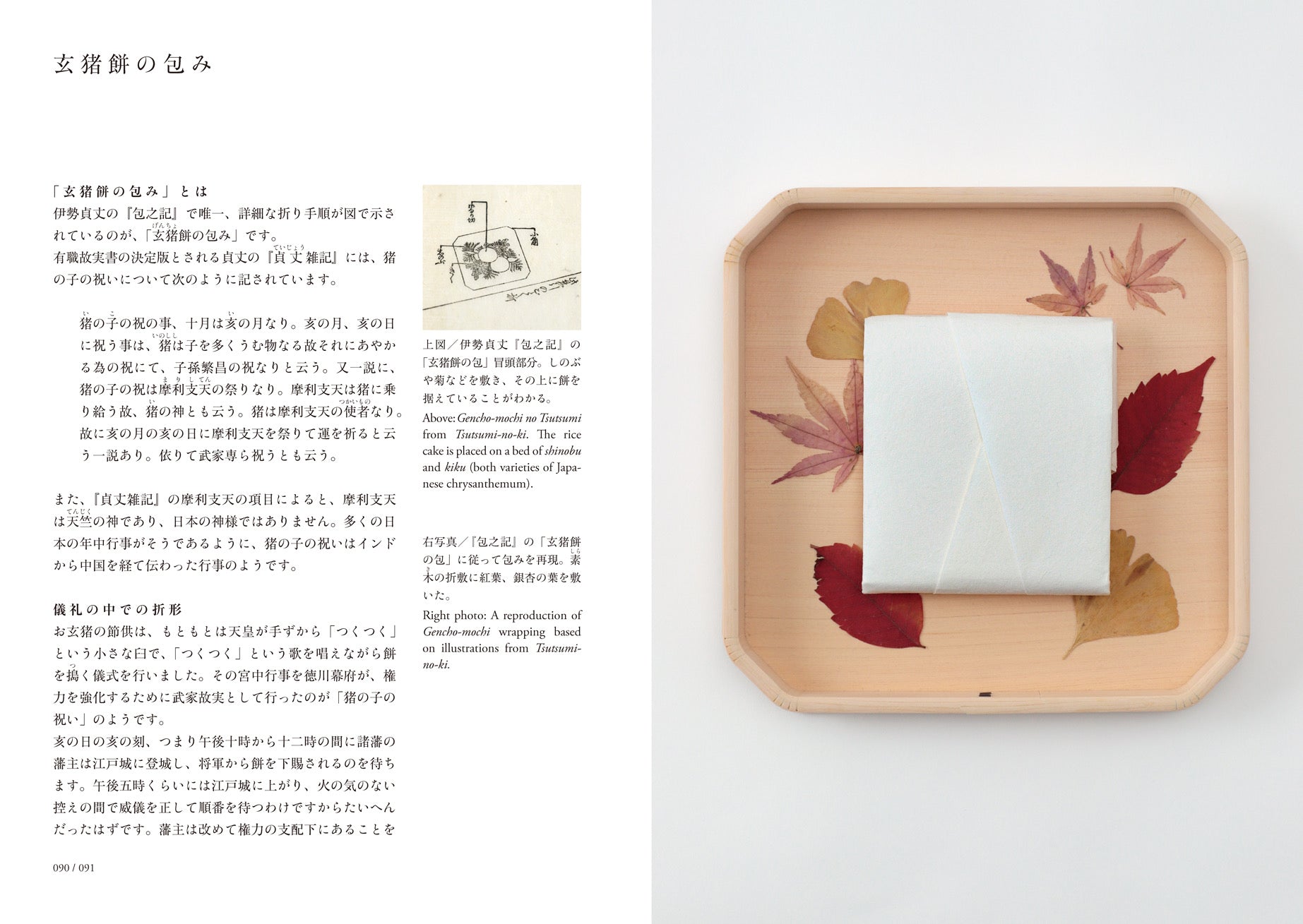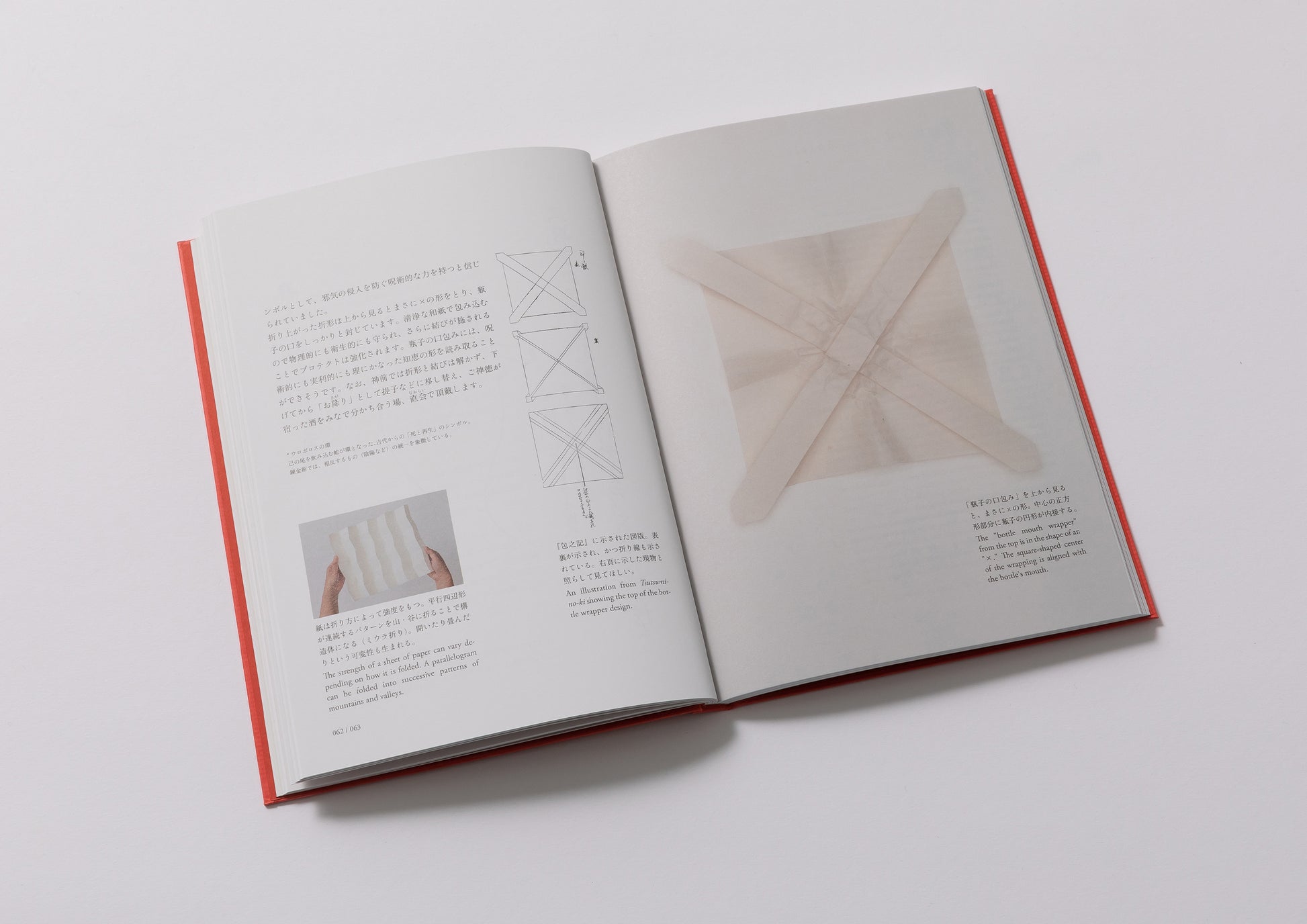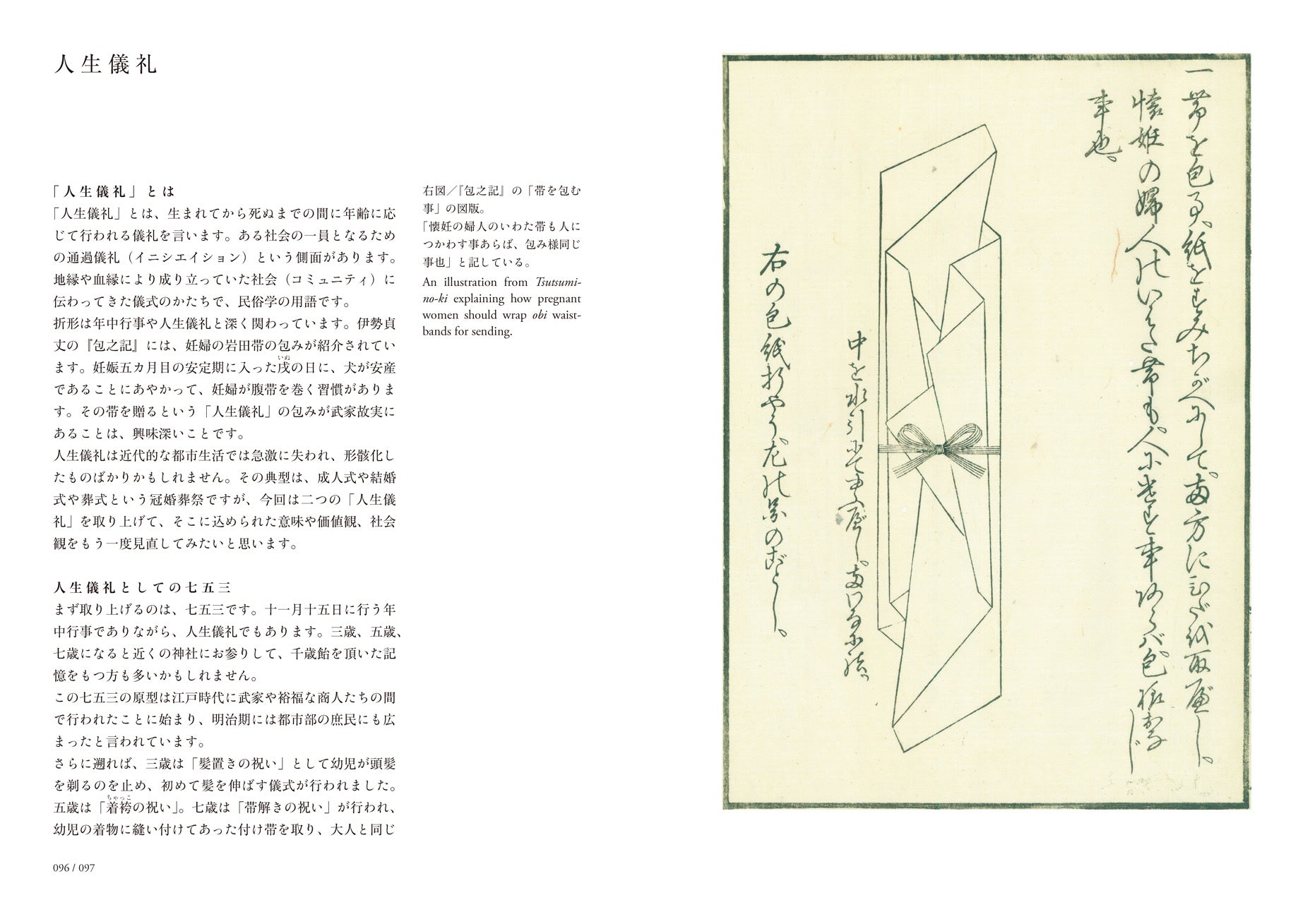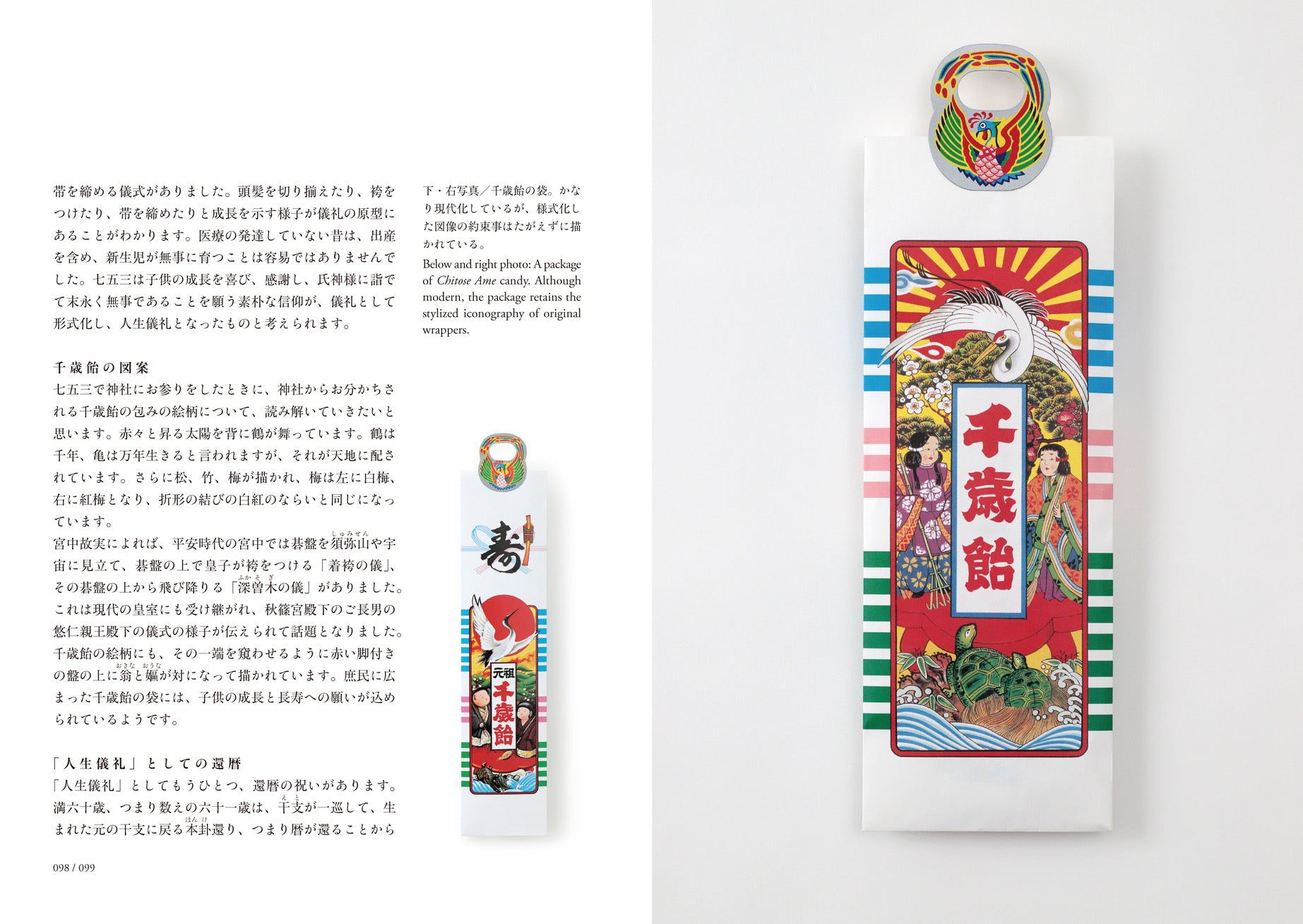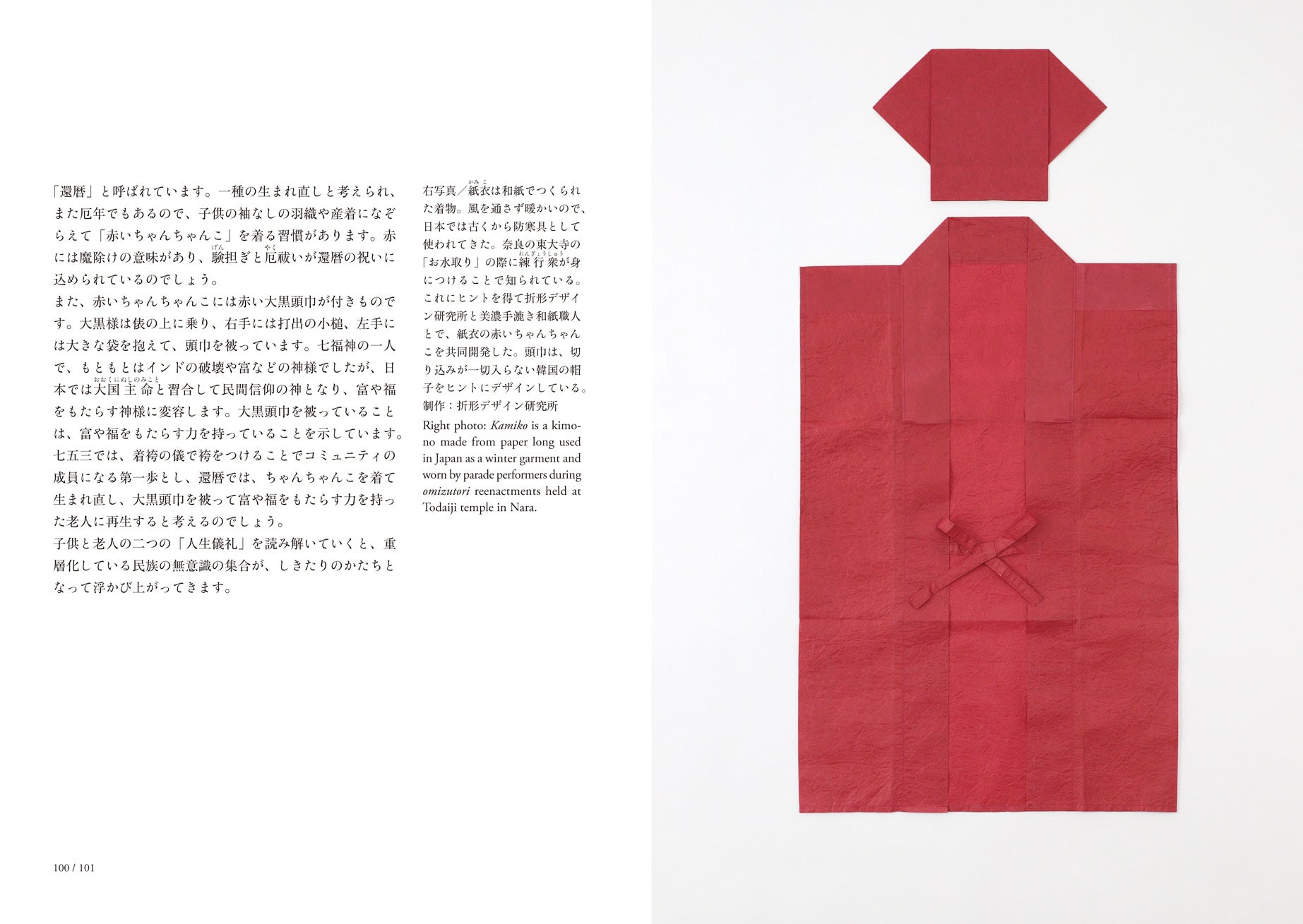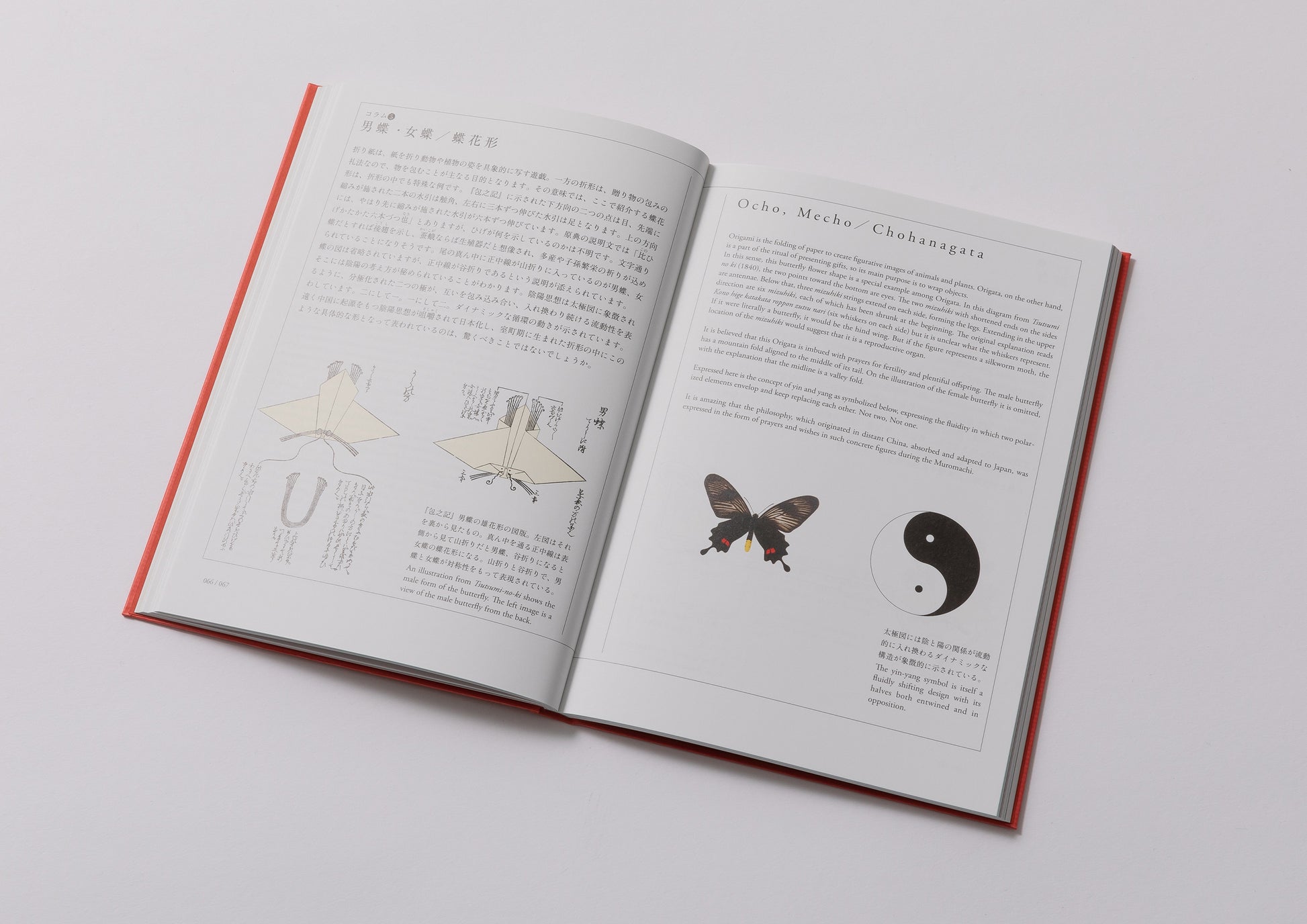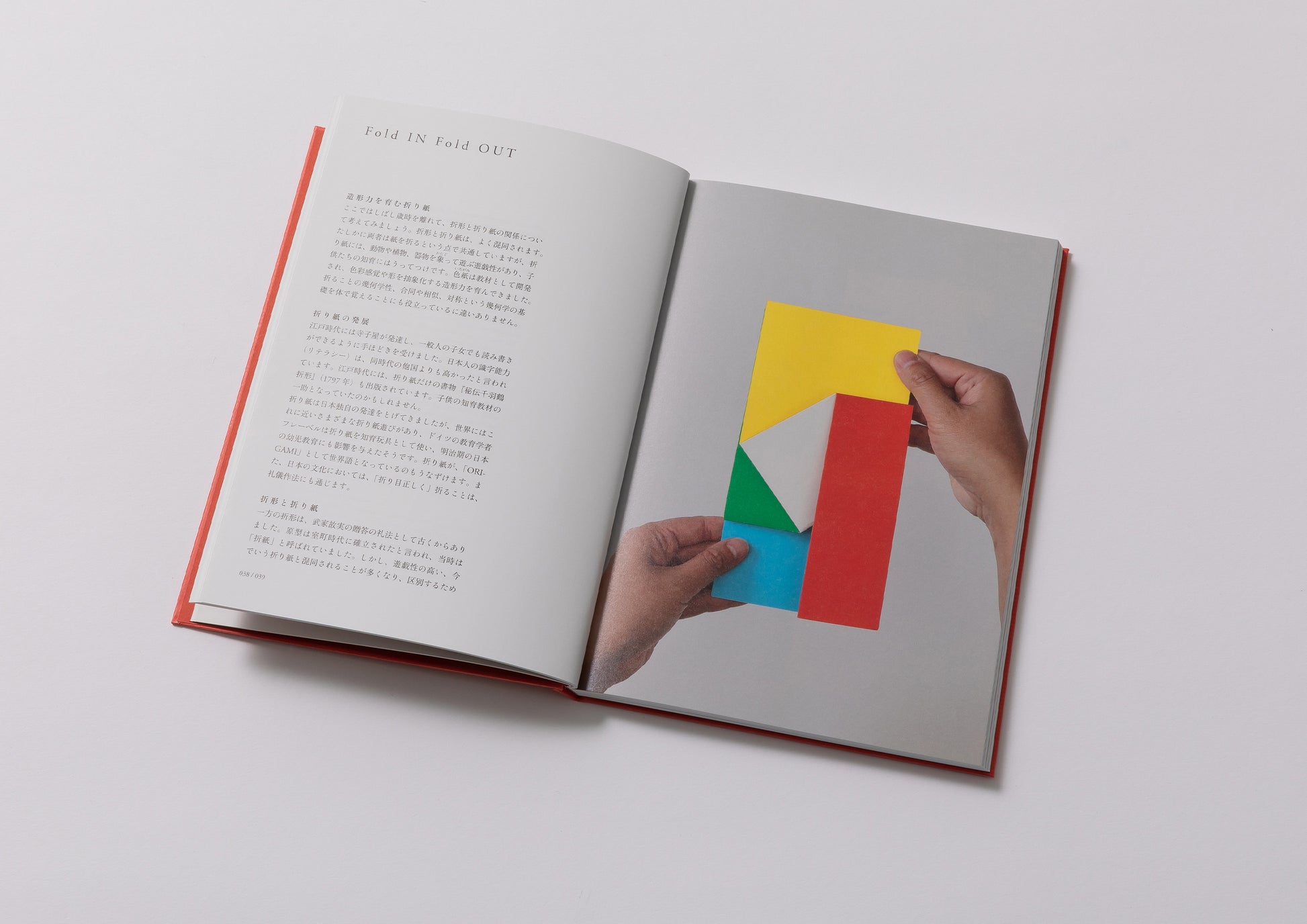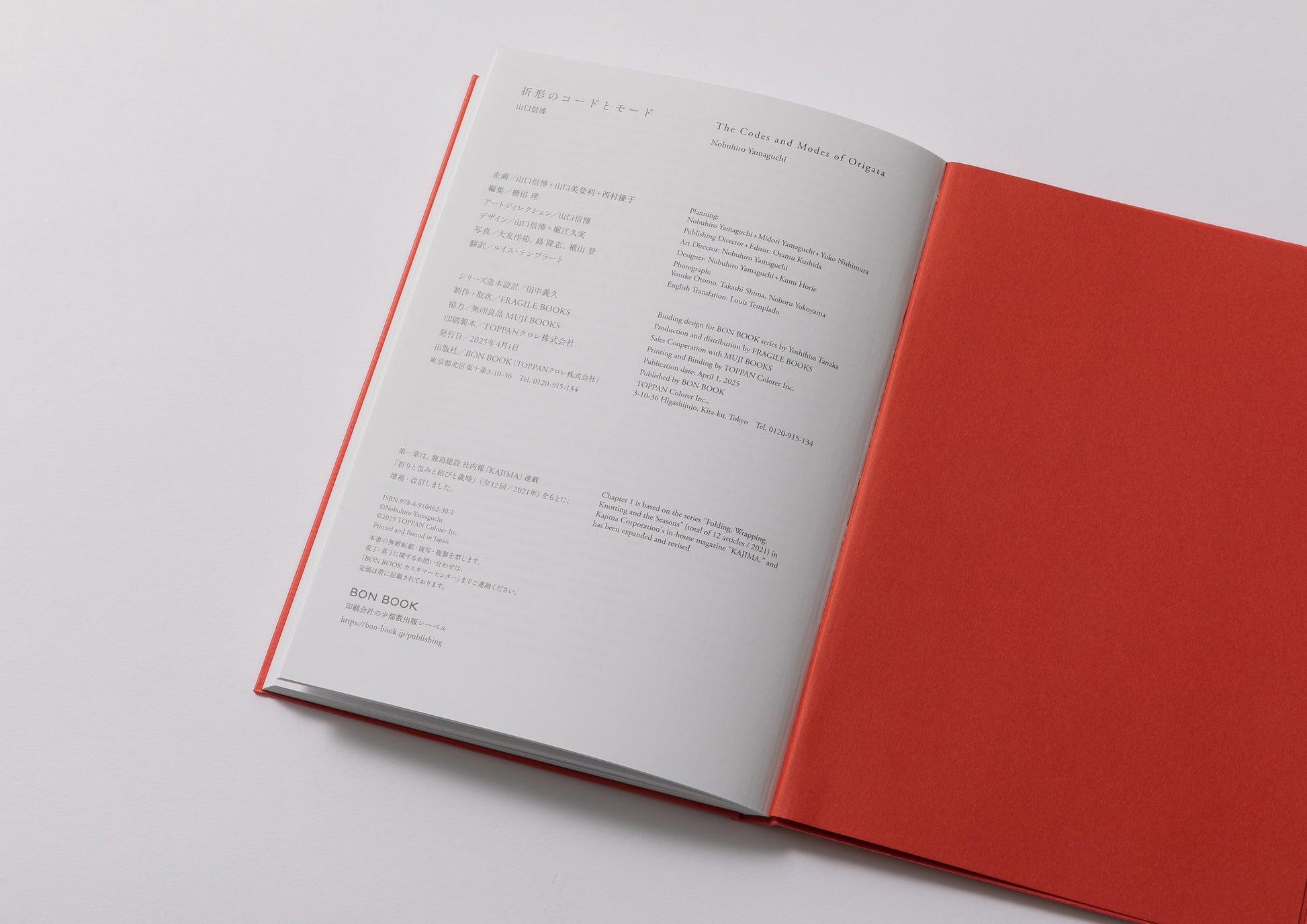Cords and Modes of the Oriental Stone/Yamaguchi Nobuhiro (Origata Design Institute)
Bibliographic Details
- Title
- The Codes and Modes of Origata / 折形のコードとモード
- Author
- Nobuhiro Yamaguchi / 山口信博
- Editor
- Osamu Kushida / 櫛田理
- Designer
- Nobuhiro Yamaguchi + Kumi Horie / 山口信博+堀江久実
- Images
- Yosuke Otomo, Takashi Shima, Noboru Yokoyama / 大友洋祐、島 隆志、横山 登
- Publisher
- BON BOOK (TOPPANクロレ)
- Year
- 2025
- Size
- h210 x w150mm
- Weight
- 350g
- Pages
- 144 pages
- Language
- Japanese and English / 日英対訳
- Edition
- 2500 copies / 2500部
- Condition
- New
- ISBN
- 978-4-910462-30-1
Planning: Nobuhiro Yamaguchi+Midori Yamaguchi+Yuko Nishimura, English translation: Louis Templado / 企画:山口信博+山口美登利+西村優子、翻訳:ルイス・テンプラート
Fold, wrap, tie, give.
Since ancient timesWe have put our hearts into our gifts.
When giving a gift with all your heart, it can be a little worrying to give it as is. We wrap it in wrapping paper, or add a small note. For celebrations and funerals, we need a noshi envelope, and for New Year's we also use a small envelope. Even small pieces of paper like banknotes are carefully wrapped in paper. It may be the Japanese mentality that we feel that if the gift is left bare, the heart does not get across.
The Japanese have developed a culture of gift-giving that allows them to express their feelings to one another by changing the patterns and formations of paper folds, wrapping, and tying them to suit the season, the recipient, and the occasion. This is a unique and beautiful custom that is unlike any other in the world. "Origata" is a beautiful tradition in Japanese life.
The origin of origami came from paper being introduced from China.It dates back to the Heian period. Female writers of the Heian period would write poems and messages on thin ganpi paper, wrap it up and send it to each other. These are what we now call letters. In samurai society, this became more specialized and systematized as samurai etiquette, and in the Edo period, gift-giving techniques and thoughtfulness spread as part of townspeople's culture. Thinking of the recipient, you fold the paper and wrap the gift. When you boil it down, it's that simple. And yet, why are the resulting paper shapes so beautiful? I think it was this simple reason that captured the heart of the author, Yamaguchi Nobuhiro, who is also a graphic designer.
According to Yamaguchi, around 1997, he happened to pick up the original copy of "Hoshinoki" published by Ise Sadatake in 1840 at a used bookstore in Jimbocho. That was his first encounter with the book. At first, he had a hard time deciphering the contents, written in a continuous style of variant kana, but he probably had an intuition that the beauty of form that leads to modern design was in the beauty of origata from the beginning. The reasons and prospects for this are explained in detail in the latter half of the book, so I will not go into detail here, but although there have been people who have explored the correctness of etiquette (i.e., the code), no one other than Yamaguchi has attempted to connect origata and design.
This book will be published as a culmination of the work of the Origata Design Institute, which will celebrate its 25th anniversary in 2025. The book is divided into two parts. The first half, titled "Folding, Wrapping, Musing, and Seasonal Events," introduces practical examples of Origata in the style of a seasonal almanac. The second half, titled "Between Origata and Design," unravels the inner connection between Origata and modern design. The author's desire to make "ORIGATA" a global language led to the bold decision to make the entire book bilingual in Japanese and English.
The author, Yamaguchi Nobuhiro, heads the Origata Design Institute, but is also a graphic designer, haiku poet, Shinto priest, amateur printer, and antique collector.
The name label pasted on the cover has faint peaks and valleys and is glued in place, so it cannot be removed and folded. However, there is a hidden mechanism that allows you to fold the paper along the peaks and create a prototype of a "chopstick wrapper."
FRAGILE BOOKS has previously introduced the "Ogasawara-ryu Noshi Origami Specimen," but now I have the "Ise-ryu Wedding Origami Specimen." When held up to the sun, the shadows of the folded paper emerge faintly, looking as beautiful as wings. Even if you're busy, when you give a gift, it's good to master the quiet gesture of folding, wrapping, and tying a piece of paper.
-
Origata Design Institute
Founded in 2002 by four graphic designers, the group aims to reinterpret traditional "Orikata" from the perspective of modern design and incorporate it into modern life. They communicate the beauty and spirit of Orikata through a variety of activities, including holding exhibitions, workshops, classes, publishing books, and developing original products in collaboration with handmade washi paper artisans.
Nobuhiro Yamaguchi
Graphic designer / Born in 1948.
Dropped out of Kuwasawa Design School. After working at Cosmo PR, he went independent in 1979. In 2001, he established Yamaguchi Design Office, Ltd., and at the same time, Origata Design Institute. His main work includes the book design of all 100 volumes of the Sumai Gaku Taikei series published by the Library Publishing Bureau of Living, and art direction for Kajima Institute Publishing's SD. His publications include Shiro no Shisoku (Messages of White) (Rattles, 2006), Tsutsumi no Kotowari (Privately published, 2013), and the haiku collection Kanakana no Shichi-Nana-Yon-Kana (Privately published, 2017). In 2018, he won the Mainichi Design Award for "Folding Design."
https://www.yamaguchi-design.jp/




